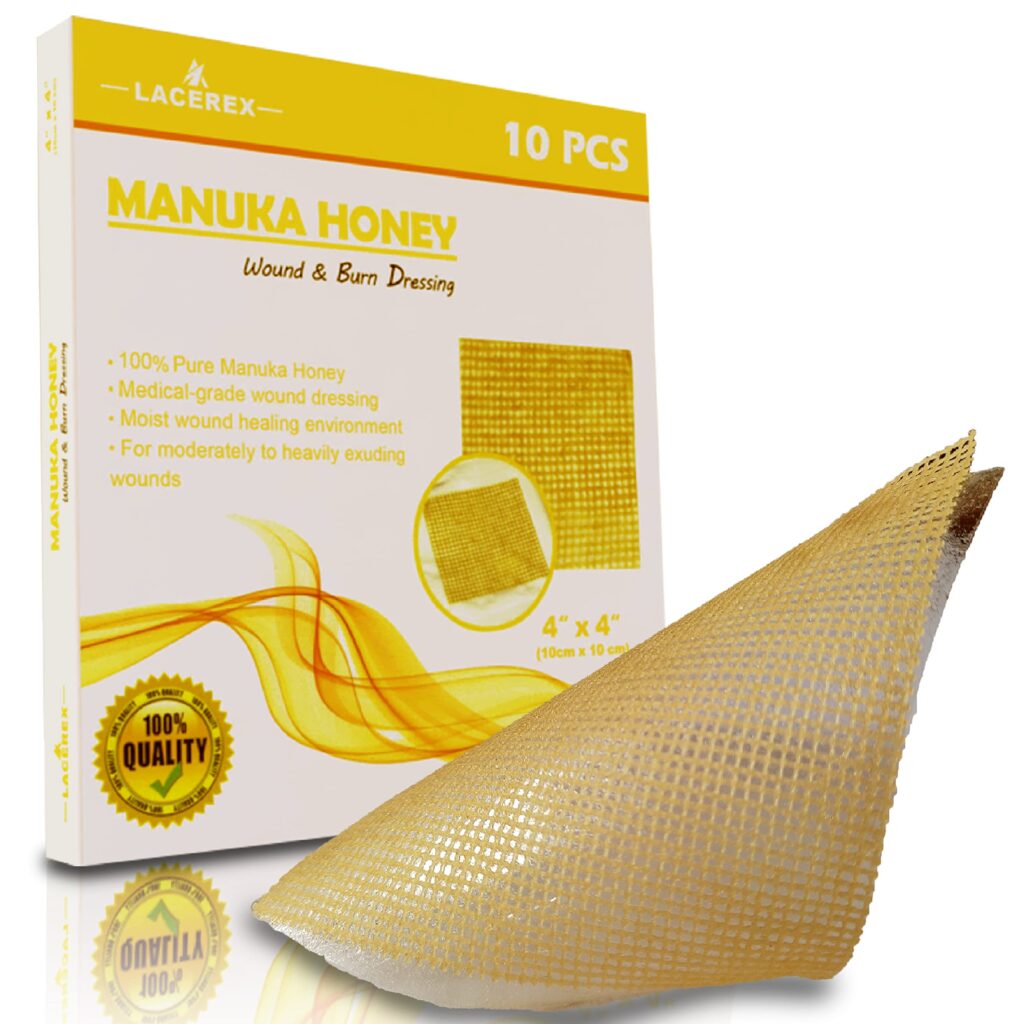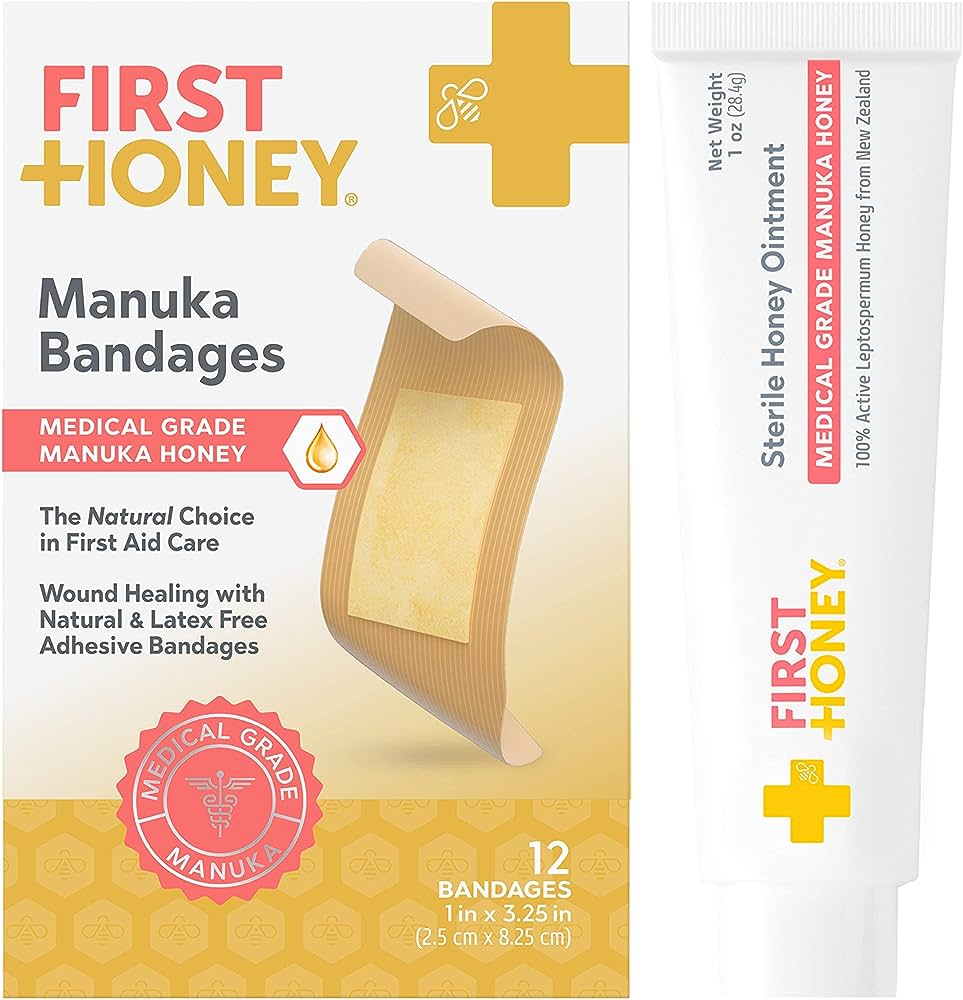
Imagine a world where wounds could heal faster and infections could be kept at bay, all with the help of a simple bandage. Well, that world is not too far away thanks to the incredible healing power of Manuka honey bandages. These unique bandages harness the natural antibacterial and anti-inflammatory properties of Manuka honey, a special type of honey native to New Zealand. By applying these bandages to wounds, they not only protect from infection but also promote faster healing and reduce inflammation. Say goodbye to traditional bandages and hello to the future of wound care with Manuka honey bandages.

Benefits of Using Manuka Honey Bandages
Antibacterial Properties
One of the key benefits of using Manuka honey bandages is their potent antibacterial properties. Manuka honey contains a unique compound called methylglyoxal (MGO), which provides powerful antibacterial activity. This makes it an excellent choice for preventing and treating bacterial infections in wounds.
Studies have shown that Manuka honey can effectively inhibit the growth of various types of bacteria, including antibiotic-resistant strains such as MRSA (Methicillin-Resistant Staphylococcus aureus). By creating an alkaline environment and releasing hydrogen peroxide, Manuka honey helps in destroying harmful bacteria while promoting the growth of healthy tissue.
Wound Healing Properties
In addition to its antibacterial properties, Manuka honey also possesses remarkable wound healing properties. The high sugar content in Manuka honey creates a moist environment on the wound, which aids in the promotion of tissue regeneration and reduces scarring.
Moreover, Manuka honey is known to have anti-inflammatory properties, which can help reduce swelling and pain associated with wounds. It stimulates the production of cytokines, a group of proteins involved in cell signaling, and boosts the body’s natural immune response to accelerate the healing process.
Application of Manuka Honey Bandages
Preparation of the Wound
Before applying a Manuka honey bandage, it is vital to thoroughly clean the wound with mild soap and warm water. Gently pat the wound dry with a clean cloth or sterile gauze. It is important to remove any debris, dirt, or foreign particles to prevent infection and ensure optimal effectiveness of the bandage.
Applying the Bandage
To apply a Manuka honey bandage, carefully open the sterile packaging and unfold the bandage. Place the sticky side of the bandage directly onto the wound, making sure it covers the entire area. Press down gently to ensure the bandage adheres securely to the skin. For larger wounds, multiple bandages may be required to provide adequate coverage.
Changing the Bandage
The frequency of changing a Manuka honey bandage depends on the condition of the wound. Generally, it is recommended to change the bandage every 24 to 48 hours. However, if the bandage becomes saturated with wound fluid or if there is any sign of infection, it should be changed more frequently. Always follow the instructions provided by the manufacturer and consult with a healthcare professional if needed.
Frequency of Application
The duration for which a Manuka honey bandage should be applied depends on the individual’s healing progress. In general, it is recommended to use the bandage until the wound shows signs of significant improvement or complete healing. However, it is essential to monitor the wound regularly and seek medical advice if there are any concerns or complications.
Choosing the Right Manuka Honey Bandage
Understanding the UMF Rating
When choosing a Manuka honey bandage, it is crucial to consider the Unique Manuka Factor (UMF) rating. The UMF rating indicates the concentration of the medicinal properties in the honey. A higher UMF rating indicates higher levels of antibacterial activity and wound healing properties. Look for a bandage with a UMF rating of 10 or above for maximum effectiveness.
Considering the Size and Shape of the Bandage
The size and shape of the bandage should be appropriate for the size and location of the wound. Ensure that the bandage can adequately cover the entire wound without any gaps. For irregular-shaped wounds, consider using a bandage that can be easily customized or trimmed to fit the wound’s contours.
Evaluating the Sterility and Packaging
To ensure the bandage’s effectiveness, it is important to check the sterility and packaging. Make sure the bandage comes in a sealed and sterile package to minimize the risk of infection. Additionally, check for any expiration dates or recommended storage conditions to ensure the bandage’s quality.
Precautions and Limitations of Manuka Honey Bandages
Allergy and Sensitivity
While Manuka honey is generally safe for most people, some individuals may be allergic or sensitive to bee products. It is recommended to perform a patch test on a small area of the skin before applying the bandage to ensure there are no adverse reactions. If you experience any irritation, itching, or redness, discontinue use immediately and seek medical advice.
Avoiding Use on Infected or Deep Wounds
Manuka honey bandages are not intended for use on infected or deep wounds. It is essential to seek medical attention for wounds that show signs of infection, such as excessive redness, swelling, pus, or a foul odor. Moreover, deep wounds may require specialized medical care and interventions, so it is best to consult with a healthcare professional.
Potential Delayed Healing in Some Cases
While Manuka honey bandages have shown remarkable healing properties for many individuals, it is important to note that there may be cases where wound healing is delayed. Factors such as an individual’s overall health, the severity of the wound, and underlying medical conditions can influence the healing process. If you notice any unusual or prolonged delay in wound healing, consult with a healthcare professional for proper evaluation and guidance.

Scientific Studies on Manuka Honey Bandages
Research on Antibacterial Properties
Numerous scientific studies have explored the antibacterial properties of Manuka honey. Research has demonstrated that Manuka honey exhibits potent bactericidal effects against various bacteria, including antibiotic-resistant strains. Its ability to disrupt bacterial biofilms and inhibit bacterial growth has been shown to aid in the management of infected wounds.
Effectiveness in Wound Healing
Studies have also focused on the wound healing properties of Manuka honey. The moisture-retaining properties of the honey promote the formation of new blood vessels and granulation tissue, leading to faster wound healing. Additionally, Manuka honey has been found to enhance collagen production, which plays a crucial role in wound closure and tissue regeneration.
Comparisons with Conventional Dressings
Several comparative studies have been conducted to evaluate the effectiveness of Manuka honey bandages compared to conventional wound dressings. These studies have consistently shown that Manuka honey bandages can accelerate wound healing, reduce infection rates, and improve overall wound management outcomes compared to traditional dressings. However, it is important to note that individual responses may vary, and consulting a healthcare professional is always recommended.
Availability and Cost of Manuka Honey Bandages
Places to Purchase
Manuka honey bandages can be obtained from various pharmacies, medical supply stores, and online retailers. It is advisable to choose a reputable source to ensure the authenticity and quality of the product. Additionally, consulting with a healthcare professional or wound care specialist may provide valuable recommendations on specific brands or suppliers.
Price Range
The cost of Manuka honey bandages can vary depending on factors such as brand, size, and the concentration of Manuka honey. Generally, expect to find a range of prices to fit different budgets. While Manuka honey bandages may be slightly more expensive than conventional dressings, the benefits they offer in terms of improved wound healing and infection prevention make them a worthwhile investment for many individuals.

Frequently Asked Questions about Manuka Honey Bandages
Are Manuka Honey Bandages Safe for Children?
Manuka honey bandages are generally safe for children. However, it is advisable to consult with a pediatrician or healthcare professional before using them on children, especially those with known allergies or skin sensitivities.
Can Manuka Honey Bandages be Used on Surgical Incisions?
Yes, Manuka honey bandages can be used on surgical incisions. They can help promote wound healing and prevent infection, provided that the incision is clean and free from any signs of complications. Ensure to follow proper post-surgical care instructions and consult with the surgeon or healthcare professional for guidance.
How Long Should I Keep a Manuka Honey Bandage on for Maximum Effectiveness?
The duration for which a Manuka honey bandage should be kept on depends on the individual’s healing progress, as well as the recommendations provided by the manufacturer or healthcare professional. In general, it is advisable to change the bandage every 24 to 48 hours, although this may vary depending on the wound’s condition. Monitoring the wound regularly and seeking medical advice as needed will ensure optimal effectiveness and healing outcomes.